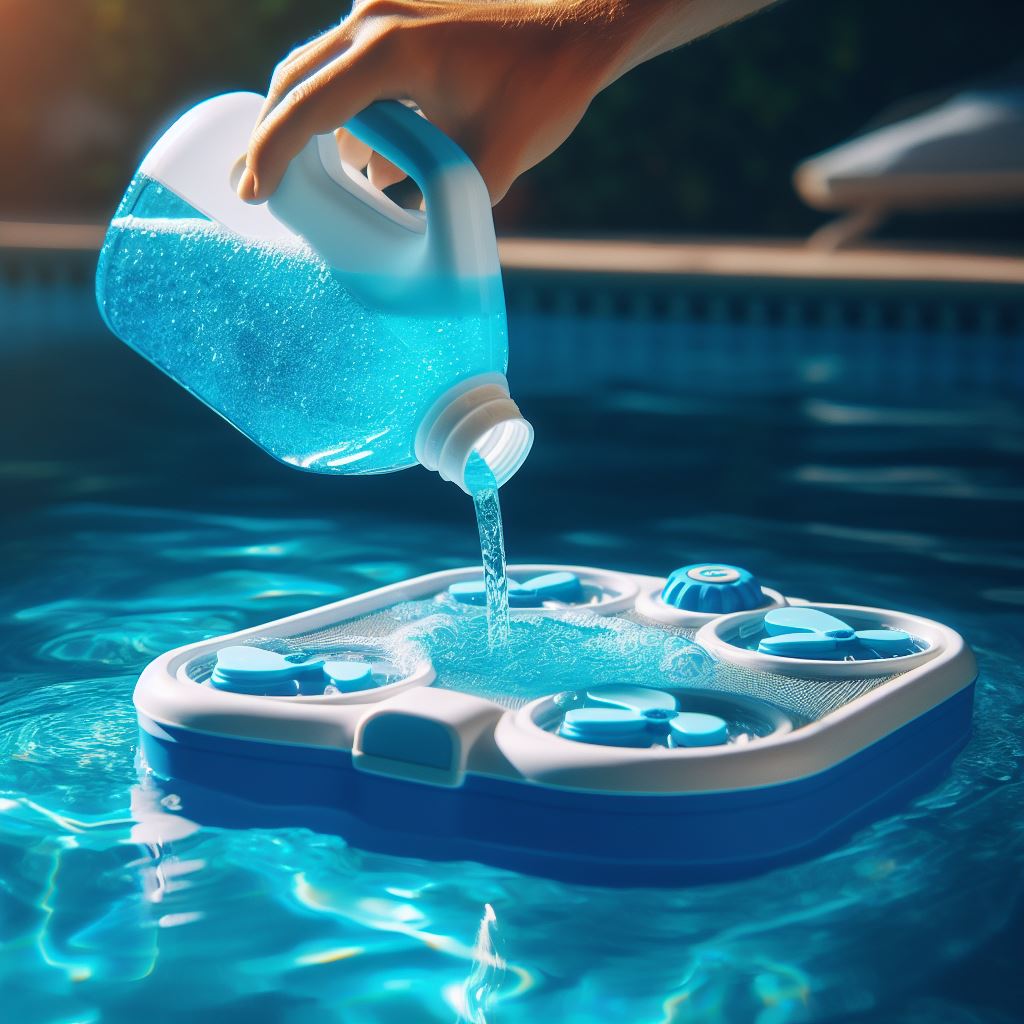In the realm of water management and conservation, the pursuit of pristine water quality has never been more crucial. As our reliance on aquatic environments for recreation, transportation, and even survival intensifies, ensuring the safety and health of these waters has emerged as a global priority. Enter the new-age chlorine floaters—a revolutionary technology that’s reshaping the way we safeguard water quality, one buoy at a time.

I. Introducing the Concept: A Fusion of Innovation and Necessity
At the heart of this innovation lies a simple yet groundbreaking idea: harnessing the powerful disinfectant properties of chlorine in a mobile, floating format. Unlike traditional water treatment methods that often require complex infrastructure and extensive maintenance, these chlorine floaters offer a flexible, cost-effective solution tailored for various waterbodies. They autonomously disperse controlled amounts of chlorine into the water, effectively combating harmful bacteria, algae blooms, and other contaminants, thereby safeguarding the health of those who swim, fish, or simply enjoy the serenity of the water.
II. Core Features and Advantages
1. Efficient Disinfection:
At the forefront of their capabilities, new-age chlorine floaters excel in their ability to swiftly and thoroughly disinfect water. By continuously releasing precise doses of chlorine, they eliminate harmful microorganisms, creating a safe and hygienic aquatic environment.
2. Intelligent Operation:
Equipped with advanced sensors and smart control systems, these floaters are designed to operate autonomously, adjusting their chlorine output based on real-time water quality data. This ensures optimal disinfection without over-chlorination, preserving the natural balance of the ecosystem.
3. Versatility in Application:
Whether it’s a sprawling lake, a bustling swimming pool, or a serene hot spring, new-age chlorine floaters can be tailored to suit diverse aquatic environments. Their compact design and easy deployment make them an ideal choice for both large-scale and niche water management projects.
4. Eco-Friendly and Sustainable:
Recognizing the importance of environmental stewardship, these floaters are designed with eco-friendliness in mind. They minimize chemical waste by using only the necessary amount of chlorine, and many models incorporate renewable energy sources such as solar power for operation, reducing their carbon footprint.
5. Cost-Effective Solution:
In the long run, investing in new-age chlorine floaters proves to be a cost-effective alternative to traditional water treatment methods. Their low maintenance requirements, high efficiency, and ability to reduce the need for manual water testing and treatment significantly cut operational costs.
III. Impact on Community and Environment of Chlorine Floaters
For Communities:
1. Enhanced Public Safety:
By continuously disinfecting waterbodies, new-age chlorine floaters drastically reduce the risk of waterborne illnesses. Clean and healthy water ensures that swimmers, boaters, and other recreational users can enjoy their activities without fear of contracting harmful diseases. This enhanced safety level fosters a sense of well-being within communities, encouraging more people to engage in aquatic activities.
2. Promotion of Water-Based Activities:
With cleaner waters, communities witness a surge in water-based activities such as swimming, kayaking, fishing, and paddleboarding. These activities not only bring joy and relaxation to individuals but also strengthen social bonds and foster a sense of community spirit.
3. Boost to Local Economies:
The proliferation of water-based activities directly benefits local economies, particularly those reliant on tourism and recreation. Clean waters attract visitors, driving up demand for accommodations, restaurants, and other tourism-related services. This, in turn, generates jobs, revenue, and overall economic growth for the region.
For the Environment:
1. Preservation of Aquatic Ecosystems:
The eco-friendly design of new-age chlorine floaters minimizes their impact on the environment. By using only the necessary amount of chlorine and incorporating renewable energy sources, they help maintain the delicate balance of aquatic ecosystems. This preservation of natural habitats is crucial for the survival of vulnerable species and the overall health of our waterways.
2. Protection of Vulnerable Species and Habitats:
Harmful pollutants and microorganisms can devastate aquatic life, threatening the existence of many species. By effectively combating these contaminants, new-age chlorine floaters provide a vital line of defense for vulnerable species and their habitats. This protection ensures the continuation of biodiversity and the integrity of our aquatic ecosystems.
3. Promotion of Sustainable Water Management Practices:
The widespread adoption of these floaters encourages the adoption of sustainable water management practices. As communities recognize the benefits of maintaining clean and healthy waters, they become more invested in preserving their aquatic resources for future generations. This shift in mindset fosters a culture of responsible stewardship and promotes long-term sustainability.
Conclusion
In conclusion, new-age chlorine floaters represent a pivotal advancement in the field of water management and conservation. Their innovative design, intelligent operation, and numerous advantages make them a formidable tool in the fight against water pollution and a vital component of any comprehensive water quality improvement plan. As we continue to navigate the challenges of maintaining clean and safe aquatic environments, embracing these cutting-edge technologies will undoubtedly pave the way for a healthier, more sustainable future for all.
 Instant
Quote
Instant
Quote Email
Us
Email
Us